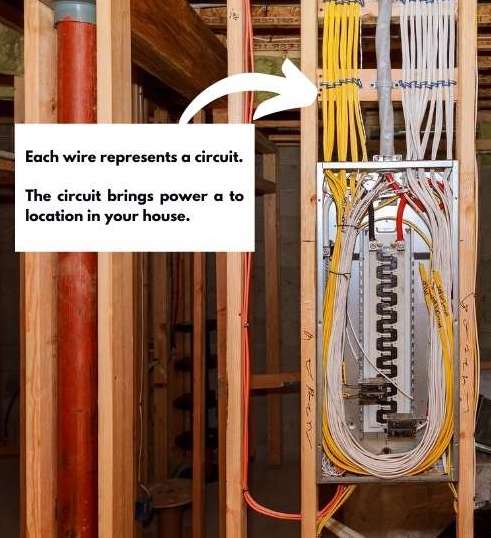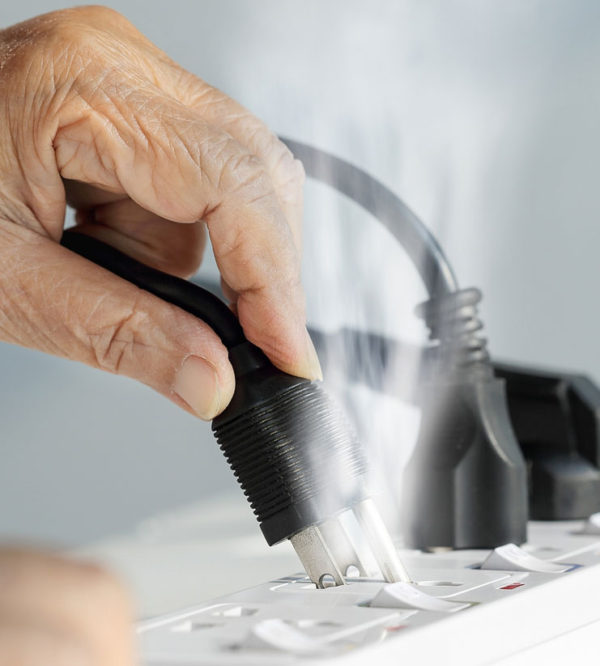Have you ever plugged in your device only to find that multiple electrical outlets in your home suddenly stop working? It’s frustrating, inconvenient, and can disrupt your daily routine.
You might be wondering what caused this problem and how to fix it quickly and safely. You’ll discover the common reasons why several outlets fail at once and simple steps you can take to get your power back on. Keep reading—you’ll learn practical tips that can save you time, money, and stress.
Common Causes
Multiple electrical outlets not working can be frustrating and confusing. Several common problems cause this issue. Understanding these causes helps you find the right solution quickly.
Electrical systems have safety features and parts that can fail. Identifying the problem may save time and money. Here are the most frequent reasons outlets stop working.
Tripped Circuit Breaker
Circuit breakers protect your home from electrical overload. When too many devices run on one circuit, the breaker trips. This cuts power to multiple outlets. Resetting the breaker often restores power fast.
Blown Fuse
Older homes use fuses instead of breakers. A blown fuse breaks the circuit and stops electricity flow. Replacing the fuse is necessary to fix the problem. Always use the correct fuse type and rating.
Faulty Outlet
Outlets can wear out or break over time. A damaged outlet won’t deliver power properly. Signs include loose plugs or sparks. Replacing a faulty outlet is a simple fix for many problems.
Loose Wiring
Loose wires inside outlets or junction boxes cause power loss. Vibrations or poor installation can loosen connections. This can be dangerous and should be checked by a professional electrician.
Gfci Outlet Issues
GFCI outlets protect against electrical shocks. They often control several other outlets downstream. If a GFCI trips, it cuts power to multiple outlets. Resetting the GFCI outlet may restore power.

Credit: roomcrush.com
Safety Precautions
Safety is the top priority when dealing with multiple electrical outlets not working. Electricity can be dangerous. Taking proper precautions protects you from shocks and injuries. Always follow these safety steps before starting any electrical work.
Turn Off Power
Switch off the main power at the breaker box. Confirm power is off by testing outlets with a voltage tester. Never touch wires or outlets with power on. This step prevents electric shocks and accidents.
Use Insulated Tools
Choose tools with insulated handles made for electrical work. Insulation blocks electric current from reaching your hand. Avoid using metal tools without insulation. This lowers the risk of electric shock while working.
Avoid Water Contact
Keep all electrical parts dry at all times. Water conducts electricity and causes short circuits. Do not work near wet surfaces or with wet hands. Staying dry keeps you safe from electrocution.
Resetting Circuit Breakers
Resetting circuit breakers is a common way to fix multiple electrical outlets not working. Circuit breakers protect your home’s electrical system. They shut off power if there is an overload or short circuit. Knowing how to reset them can restore power safely and quickly.
Locate The Breaker Panel
The breaker panel is usually in a basement, garage, or utility room. It looks like a metal box with a door. Inside, you will see many switches lined up. This panel controls the electricity in your house.
Identify Tripped Breaker
A tripped breaker switch will be in a different position than the others. It might be in the middle or off position. Sometimes, the switch feels loose or looks different. Finding the right breaker is key to restoring power.
Proper Reset Technique
To reset, first turn the breaker fully to the off position. Then, switch it back on firmly. Do not force it if it does not move easily. After resetting, check if the outlets work again. This process helps clear the fault safely.
Checking Gfci Outlets
Multiple electrical outlets not working can be frustrating. One common cause is a tripped GFCI outlet. GFCI outlets protect against electrical shocks by cutting power during faults. Checking these outlets can help restore power quickly and safely.
Locate Gfci Outlets
GFCI outlets often look different from regular outlets. They have two buttons labeled “Test” and “Reset.” These outlets are usually in kitchens, bathrooms, garages, or outdoor areas. Look around these places carefully to find them.
Press Reset Button
Once you find a GFCI outlet, check if the reset button is popped out. Press the reset button firmly until it clicks. This action restores power to the outlet and connected outlets downstream. Sometimes, pressing this button fixes the problem instantly.
Test Outlet Functionality
After resetting, test the outlet by plugging in a small device or lamp. If the device powers on, the outlet works correctly. If not, try resetting the GFCI again or check other outlets. Testing ensures power is restored safely and properly.
Inspecting And Replacing Outlets
Inspecting and replacing electrical outlets helps fix multiple outlets not working. It reveals hidden damage or loose wiring. Repairing outlets keeps your home safe and powered.
Remove Outlet Cover
Turn off the power at the circuit breaker. Use a screwdriver to remove the outlet cover. Keep screws safe for reassembly. This step exposes the outlet for inspection.
Check For Damage
Look for cracks, burn marks, or discoloration on the outlet. Check if wires are loose or disconnected. Damaged outlets cause poor connection and can be dangerous. Note any signs before replacing.
Replace Outlet Safely
Purchase a new outlet matching the old one’s specs. Connect wires to the new outlet terminals tightly. Secure the outlet back into the wall box. Attach the cover and turn power on. Test to confirm the outlet works properly.

Credit: m.youtube.com
Fixing Loose Wiring
Loose wiring is a common cause of multiple electrical outlets not working. Fixing loose wiring can restore power safely and quickly. It involves checking connections and making sure wires are tight and secure.
Identify Loose Connections
Turn off the power before starting any work. Remove the outlet covers and check wires inside. Look for wires that are not firmly attached or hanging loose. Use a flashlight to see clearly. Loose wires can cause outlets to fail or spark.
Tighten Wire Nuts
Wire nuts connect multiple wires inside the outlet box. If they are loose, twist them clockwise to tighten. Make sure the wires are twisted together under the nut. Loose wire nuts can break the circuit and stop power flow. Always double-check the tightness for safety.
Secure Wire Terminals
Check the screws holding wires on the outlet terminals. Use a screwdriver to tighten any loose screws. Wires should wrap clockwise around the terminal screws. Loose terminals cause poor contact and outlet failure. Firm connections keep electricity flowing without interruption.
When To Call An Electrician
Multiple electrical outlets not working can be frustrating and confusing. Knowing when to call an electrician helps avoid bigger problems. Some issues need a professional’s touch for safety and proper repair.
Persistent Problems
Outlets that stop working again and again need expert help. A quick fix might not last. An electrician finds the root cause. They prevent future failures and keep your home safe.
Complex Wiring Issues
Electrical wiring can be tricky and dangerous. Faulty connections or old wires cause multiple outlets to fail. Professionals understand wiring diagrams and codes. They fix problems without risking damage or injury.
Safety Concerns
Sparks, burning smells, or flickering lights warn of serious risks. Electrical faults can cause fires or shocks. Calling an electrician ensures safe and proper repair. Protect your family and property by acting fast.

Credit: assuranceelectricalaz.com
Preventive Tips
Preventing multiple electrical outlets from failing saves time and money. Simple habits and checks keep your home safe and powered. Small steps reduce the risk of electrical problems and outages.
Avoid Overloading Circuits
Do not plug too many devices into one outlet. Each circuit has a limit. Exceeding this can cause breakers to trip or wires to heat. Spread out appliances among different outlets. Use power strips with built-in surge protectors.
Regular Outlet Checks
Check outlets often for damage or wear. Look for cracks, discoloration, or loose plugs. Test outlets with a simple tester tool. Replace any faulty or outdated outlets quickly. Early detection stops bigger electrical issues.
Use Quality Electrical Components
Choose outlets and plugs from trusted brands only. Cheap parts may fail or cause hazards. Use components rated for your home’s voltage and load. Quality materials last longer and work safely. Proper parts protect your home and family.
Frequently Asked Questions
Why Are Multiple Outlets Suddenly Not Working?
A tripped circuit breaker or blown fuse often causes several outlets to stop working.
How Do I Reset Outlets That Stopped Working?
Locate your breaker box and switch off, then on the breaker controlling those outlets.
Can Faulty Wiring Cause Multiple Outlets To Fail?
Yes, damaged or loose wiring can disrupt power to many outlets at once.
Should I Check Gfci Outlets If Many Outlets Fail?
Yes, a tripped GFCI outlet can cut power to other connected outlets.
When To Call An Electrician For Outlet Issues?
Call a professional if breakers keep tripping or if wiring looks damaged or unsafe.
Conclusion
Multiple electrical outlets not working can signal various issues. Checking the circuit breaker is a good first step. Look for loose wires or damaged outlets. Sometimes, a simple reset fixes the problem quickly. Avoid using outlets that spark or feel warm.
Call a licensed electrician if unsure or problems continue. Staying safe and fixing electrical problems early saves time and money. Don’t ignore signs of electrical trouble in your home. Taking quick action keeps your home safe and powered.
